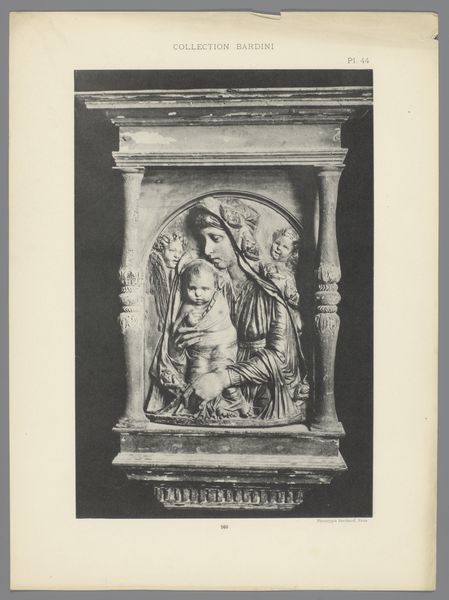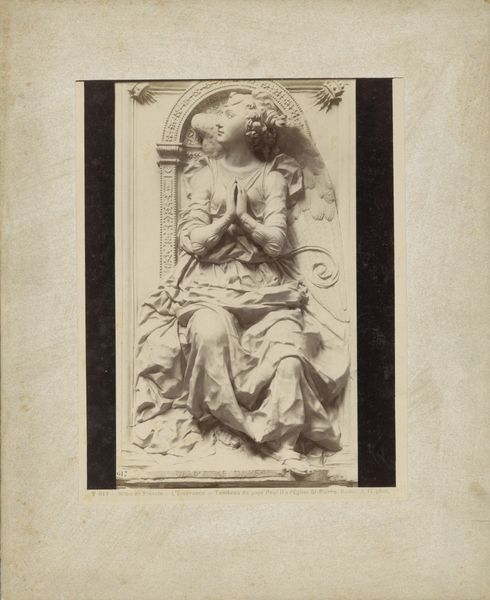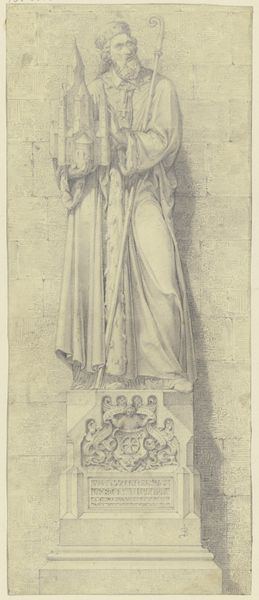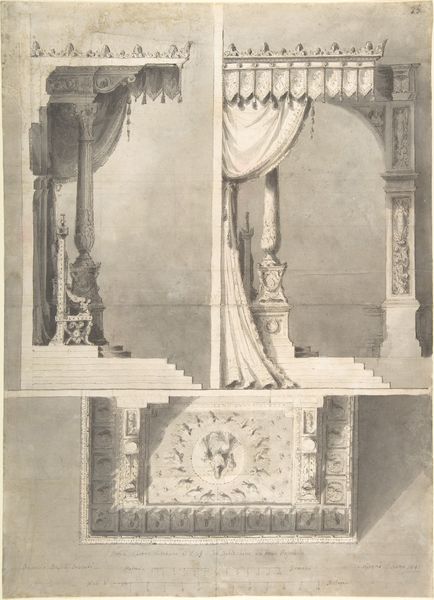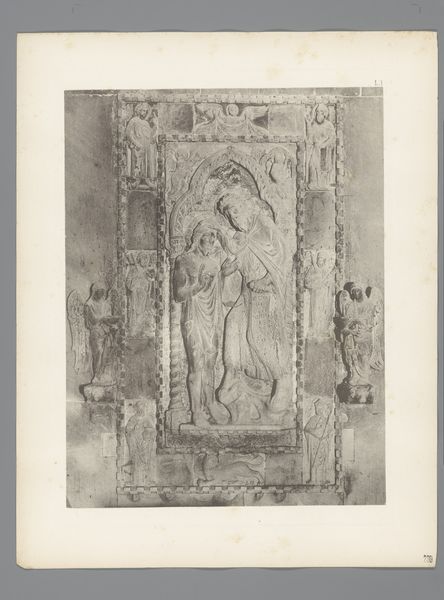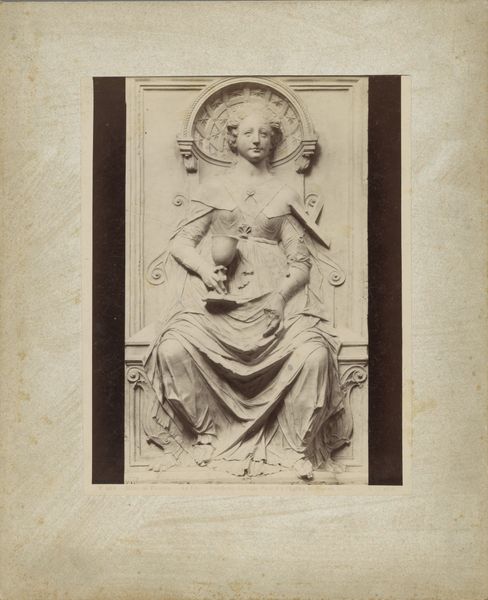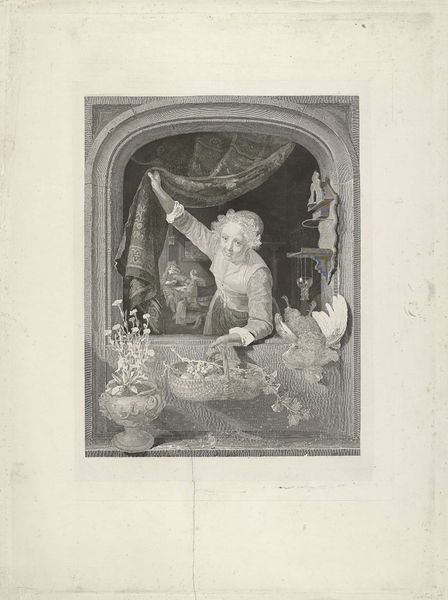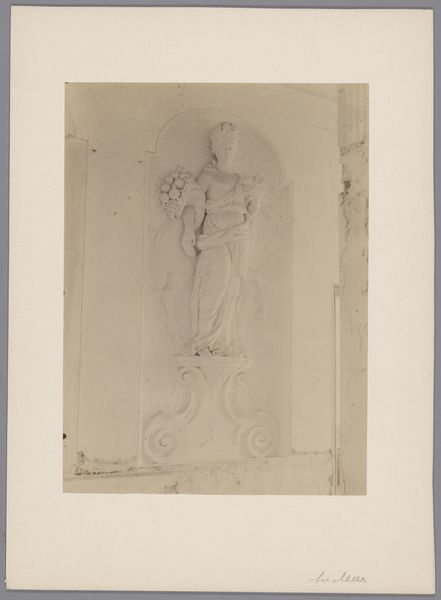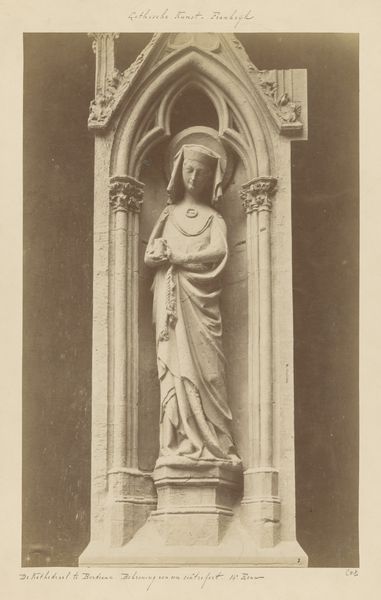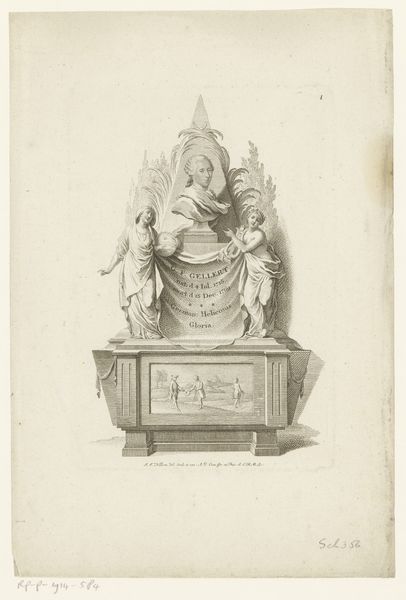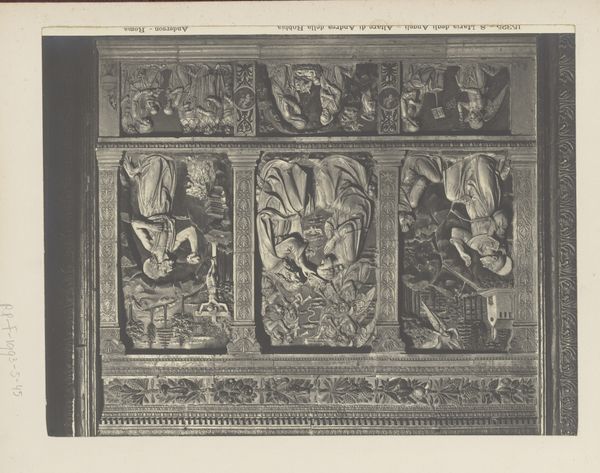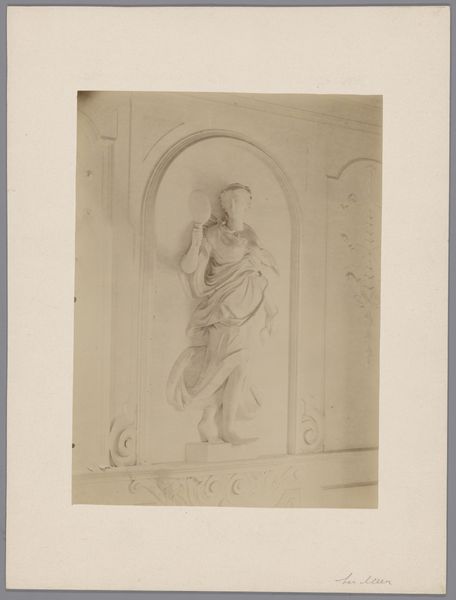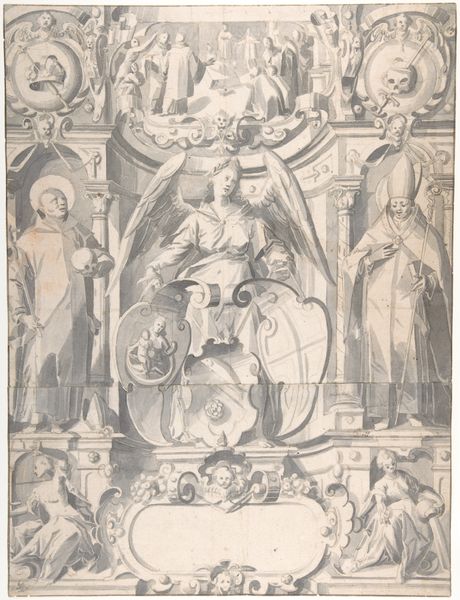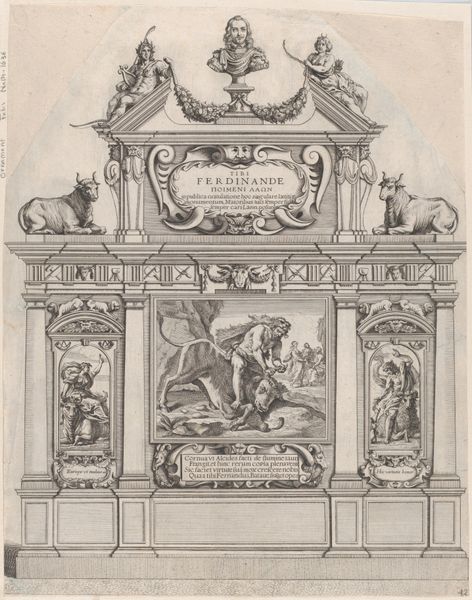
Sculptuur van Madonna met kind uit terracotta naar Luca della Robbia in het Camposanto te Pisa, Italië 1860 - 1881
0:00
0:00
photography, sculpture, gelatin-silver-print, terracotta
#
portrait
#
photography
#
sculpture
#
gelatin-silver-print
#
terracotta
#
italian-renaissance
Dimensions: height 256 mm, width 200 mm
Copyright: Rijks Museum: Open Domain
Editor: This photograph from between 1860 and 1881 by Giacomo Brogi captures a terracotta sculpture of the Madonna and Child after Luca della Robbia, located in the Camposanto in Pisa. The whole scene, with its array of cherubic faces, seems filled with a sense of gentle serenity. How do you interpret this work, especially considering it’s a photograph of a sculpture? Curator: The image vibrates with echoes. The Madonna and Child is not simply an image, but an archetype, a deeply embedded representation of maternal love and divinity. Consider the circle of cherubs; circular imagery suggests the eternal, a concept Della Robbia explored to emphasize the unending nature of faith. Even as a photographic reproduction, this composition preserves cultural memory, carrying the symbolic weight across time. What does the Renaissance, and the enduring appeal of the Madonna figure, evoke for you? Editor: It brings to mind ideas of rebirth and humanism, and a shift towards a more approachable religious art, though still very much rooted in faith. Is that why Della Robbia chose terracotta? Curator: Precisely. Terracotta offered a more accessible and human medium, compared to the preciousness of gold or ivory. It’s grounded, earthy – resonating with everyday experience, and thus more relatable. Even now, through Brogi's lens, this photograph reminds us of art's capacity to collapse time, isn't it? Editor: It really is! It's fascinating to consider how a photograph can become another layer of interpretation for a sculpture already rich in symbolism and history. Thanks for shedding light on those aspects! Curator: My pleasure! It’s always rewarding to see how these symbols continue to speak to us, across the centuries and mediums.
Comments
No comments
Be the first to comment and join the conversation on the ultimate creative platform.
